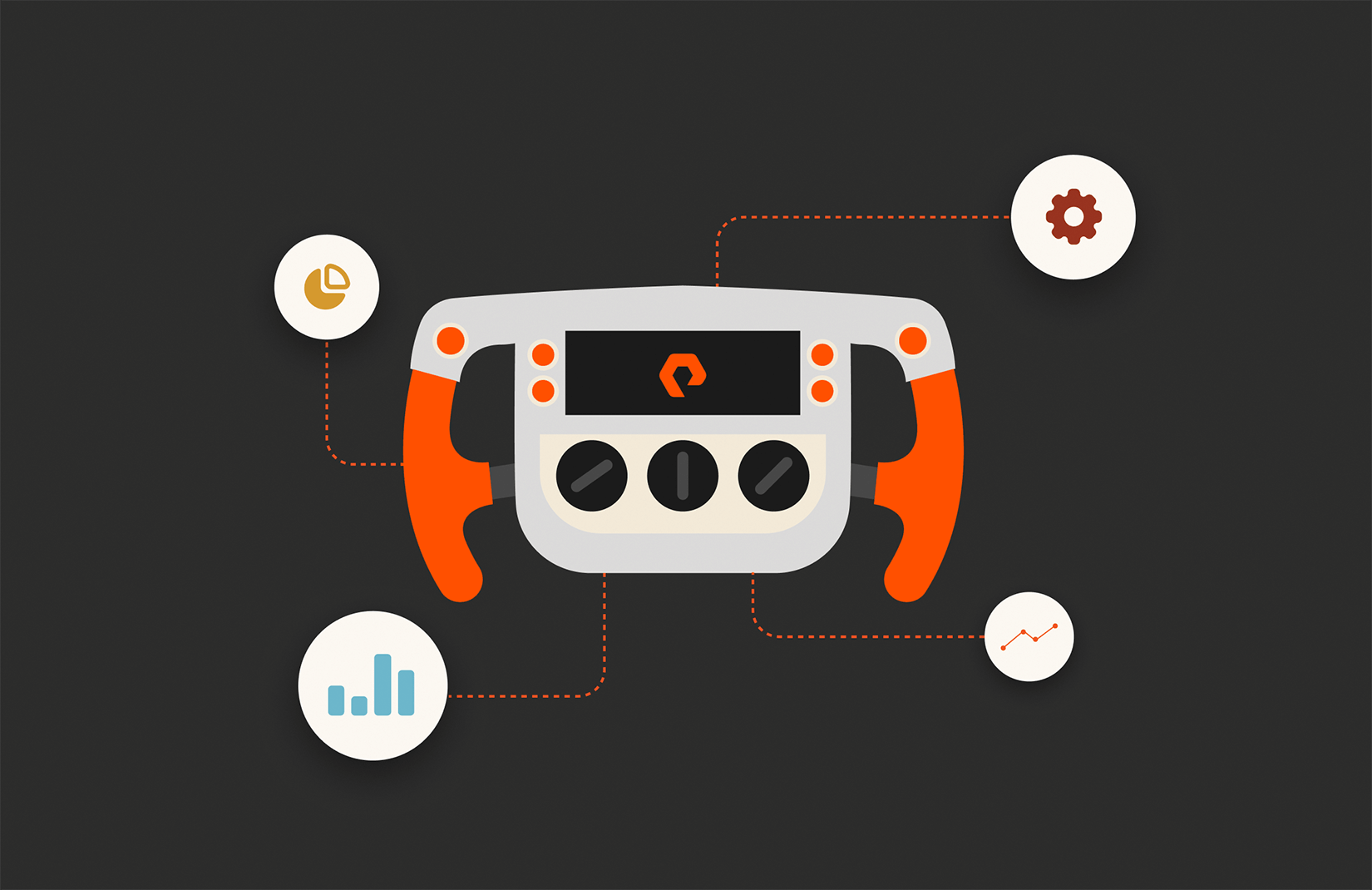After Lewis Hamilton took his 14th podium at the British Grand Prix this weekend, he thanked the fans, but he also thanked his team.
There’s a reason Formula 1 drivers often do this first thing after the final lap. Instead of “I did it,” you’re likely to hear, “we did it.” That’s because engineers and analysts trackside and in the factory play as important a role on race day as the drivers do—and like the cars, they’re all #DrivenByData.
Who Are F1 Engineers and What Do They Do?
F1 racing teams comprise a variety of engineers, IT pros, mechanics, and electronics experts who collect and analyze data and on-track action all weekend long. For example, a team could include:
- Race engineers
- Strategy engineers
- Performance engineers
- Trackside electronics engineers
- Trackside IT support engineers
- Trackside fluid engineers
- Race support operations
This also includes engineers back at the factory. Data is the thread that ties all their efforts together, helping engineers deliver intel that drivers can’t get from the cockpit alone.
The Data Between the Pitwall to the Cockpit
If you’ve ever watched an F1 broadcast, you’ve heard the conversations between drivers and their engineers in the pit. At any moment, engineers can see how the car is holding up with sensor data and see who’s ahead and behind (and by how much). These insights inform drivers and strategies—when to pit, when to pass, and more.
Here are a few data-driven moments over the F1 airwaves to give you an idea:
“Take care of the front tires, please.”
TIres are perhaps the most strategic, variable part of a race strategy. Data is sliced and diced each week to inform compound choices and pit stop strategies based on the car, the track, and the weather. Mid-race, real-time data can also inform handling and driving style. Engineers can warn drivers to back off on certain turns or tone down the aggressive driving, which can wear tires faster.
In the 2023 British Grand Prix, engineers warned Lewis he’d need to back off to preserve his tires, which had taken a beating in a battle with Lando Norris. This proved a successful strategy until he could capitalize on a safety car for a full swap.
“We’ll need to cool the car down.”
Real-time sensor data from the car and information from other teams are livestreamed to give engineers insights that can be relayed back to drivers—either as strategic plays or warnings about the car.
For example, when an engine is close to overheating, engineers can warn drivers to back off and let things cool down. This may mean dropping further behind cars in front, which put off a lot of heat in their wash, or bringing the engine down during upcoming turns if they’re pushing the car too much. It’s what The Team told George Russell to do at the 2022 Melbourne Grand Prix. “Well, that’s not what I want to hear,” he replied, but went on to land his first podium with the team.

The Innovation Race
Reducing Risk and Navigating the AI Frontier for Future Success
“You’re six seconds behind, but your pace is better. Keep pushing.”
Being able to dynamically view a car’s speed and the speeds of those around it allows engineers to calculate distance and time between drivers and their competitors—so it’s easier to know what’s a long shot and what’s not. Tire age plays a role here, too. A competitor on older tires may be up for a pit soon or struggling with grip, while someone on newer tires may easily overtake.
For leaders in a defensive position, engineers may also say, “Your pace is at least as good as the cars behind,” so drivers know if they’re in the clear or need to be ready to block to maintain position.
“We’re picking up safety-critical vibrations. Box now, please.”
Sensors on the car are constantly generating data about the car’s performance, able to indicate issues before they take a car off the tarmac. This can include vibrations caused by the suspension or uneven tire wear. Before the vibrations become a danger to the driver and the car, engineers can request a pit stop to address issues.
“DRS is activated.”
When a driver wants to overtake on a straight within a DRS zone, they must be within one second of the car in front—something engineers on the pit wall can relay as they’re approaching a DRS zone. They’ll also let drivers know if the car behind them is cleared for DRS—which, if they’re not as well, means they’re likely to get passed.
Learn more about the data behind DRS zones >>
“I’m really struggling with [x]…Is there anything I can do about it?”
It’s a two-way street on the radio, which means drivers also relay information about the car and the track. Certain questions or concerns can be answered with data, while others may require a pit. Drivers may flag issues with balance, the gearbox, brakes, or tires to see if there are adjustments that can be made from their spot in the car. With brakes, for example, engineers may suggest cooling the car down to see if things improve.
If the answer to this question is no, it’s back to the box.
“Take care of the front tires, please.”
You can’t expect drivers not to always compete to win, but sometimes data can suggest a more cautious strategy on the track—such as backing off on certain turns or toning down the aggressive driving, both of which can wear tires faster. Tire wear indicators and tire temperature sensors allow an engineer to advise the driver on how to extend the life of the car’s tires.
Similarly, the team may also tell a driver to let a car pass to protect the car—something George Russell heard at the 2022 Melbourne Grand Prix. “Well, that’s not what I want to hear,” he replied, but went on to land his first podium with the team.
“We’re going to have to retire the car.”
The words you never want to hear, but once the call is made, there’s no going back. Here’s where, barring critical failures or crashes, data can help engineers make the call between boxing and retiring—and know it was the right one to make.
Get Real-time Analytics at the Speed of F1 with Pure Storage
For customers not in the business of racing, Pure Storage’s platform can deliver the same agility. By taking an F1 approach to storage, we deliver on data’s biggest demands with always-fast, always-modern technology to keep you in the race—and ahead of the pack.
Have Backup
Rely on a backup architecture that’s fast enough to back up and restore data when it matters most, yet big enough to consolidate your data silos—including your backup appliances.







